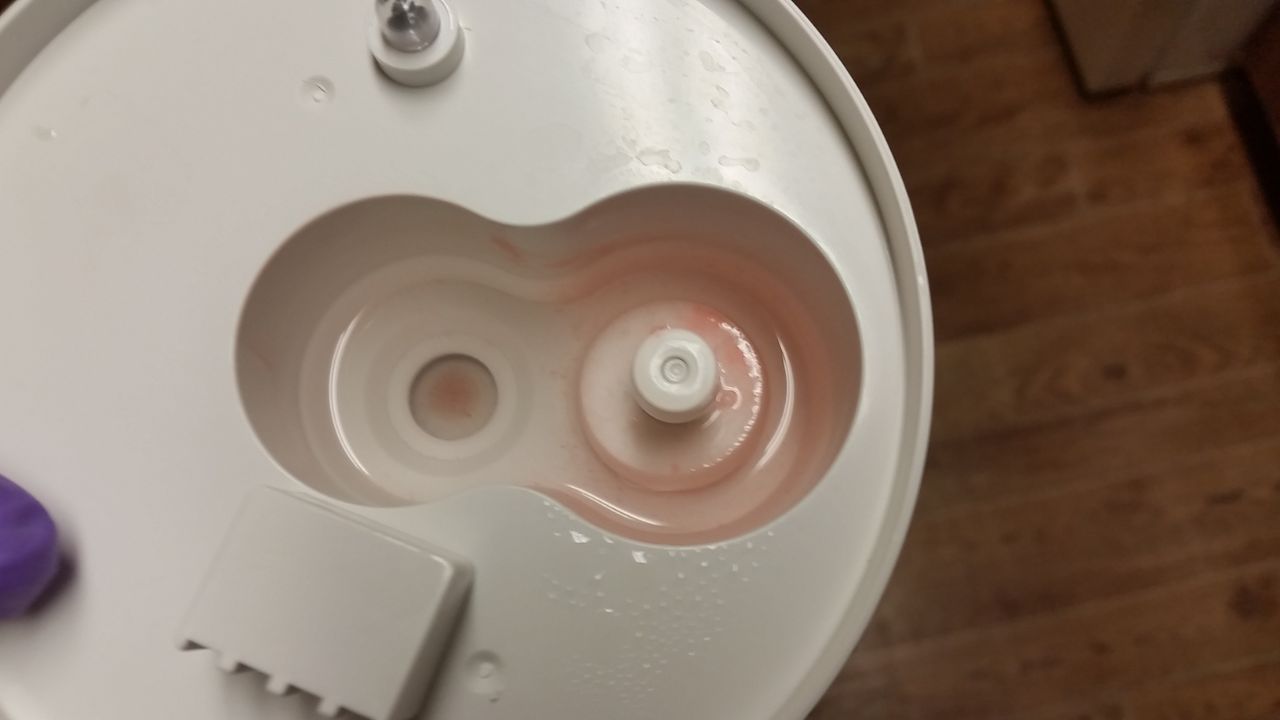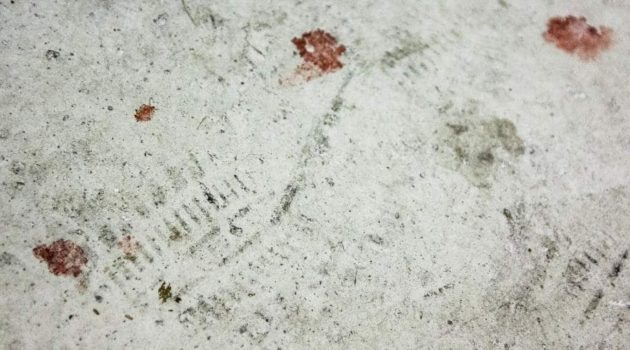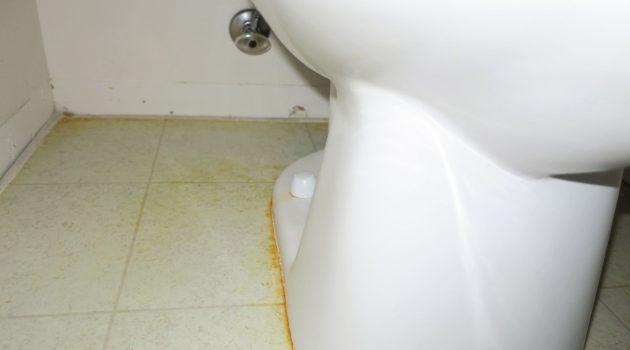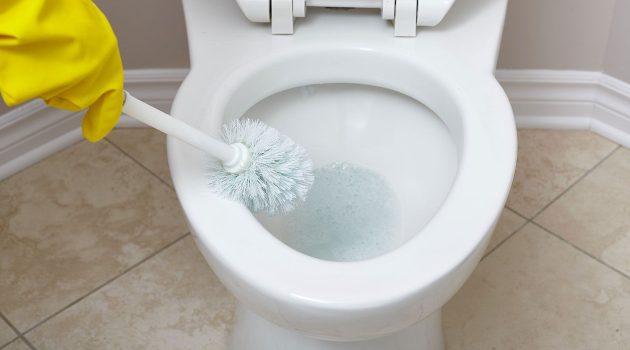Humidifiers are essential to many homes, helping maintain a comfortable and healthy environment.
Despite their benefits, they can harbor unwelcome guests if not properly maintained.
One such intruder is the pink mold that can develop inside the humidifier, raising concerns about its impact on your health.
While aesthetically unappealing, pink mold is quite common and easy to deal with.
In the coming paragraphs, you’ll learn more about what pink mold is, how it forms, and how to eliminate it.
By understanding and addressing this issue, you can ensure your humidifier remains a safe and efficient tool for maintaining the comfort of your living space.
1. Understanding Pink Mold
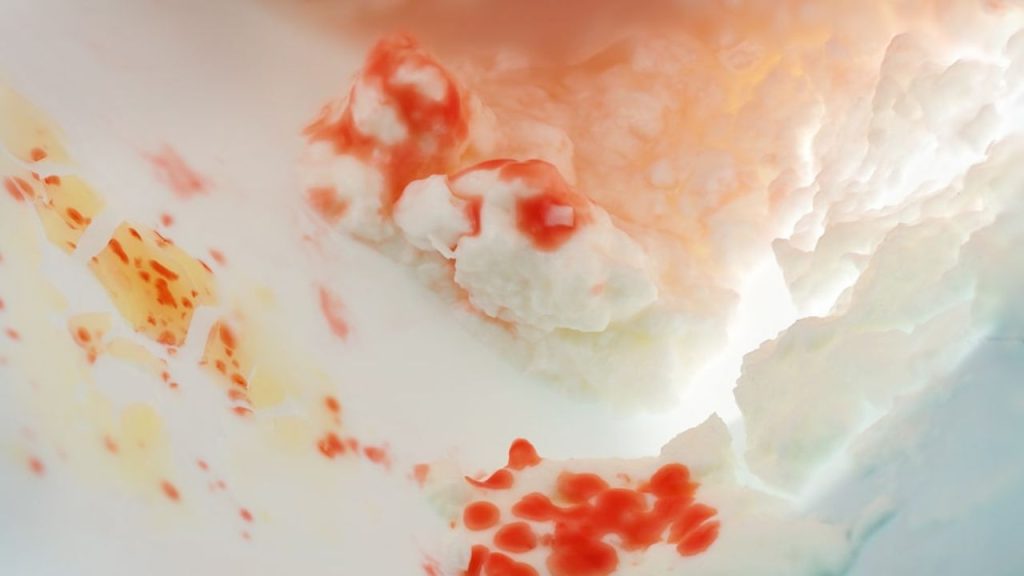
Pink mold is a common issue in humidifiers, but it’s important to understand the different types of mold that can form and their characteristics.
Serratia Marcescens
Serratia marcescens is a type of bacteria, rather than a mold, that is often mistaken for pink mold due to its pink or red color.
This bacteria is known for growing in damp areas, including:
- Bathroom tiles
- Toilet bowls
- Showers
- Humidifiers
Keeping the area clean and well-ventilated can help reduce the presence of Serratia marcescens in your home.
Aureobasidium Pullulans
Aureobasidium pullulans is a fungus that starts pink and turns darker as it matures. It thrives in damp and warm environments and might be found in:
- Near indoor plants
- In bathroom grout
To prevent this mold from going airborne and affecting your humidifier, keeping your device clean and well-maintained is essential.
Fusarium
Fusarium is another mold that can appear pink and is often found in damp, humid environments. It can grow on various surfaces, such as:
- Wallpaper
- Window sills
- Water-damaged building materials
Although Fusarium is less common in humidifiers than the other two types mentioned, keeping your device clean is essential to avoid mold growth.
READ MORE: Room Smells Musty but No Mold: Quick Solutions to Freshen Up
2. Pink Mold in Humidifiers
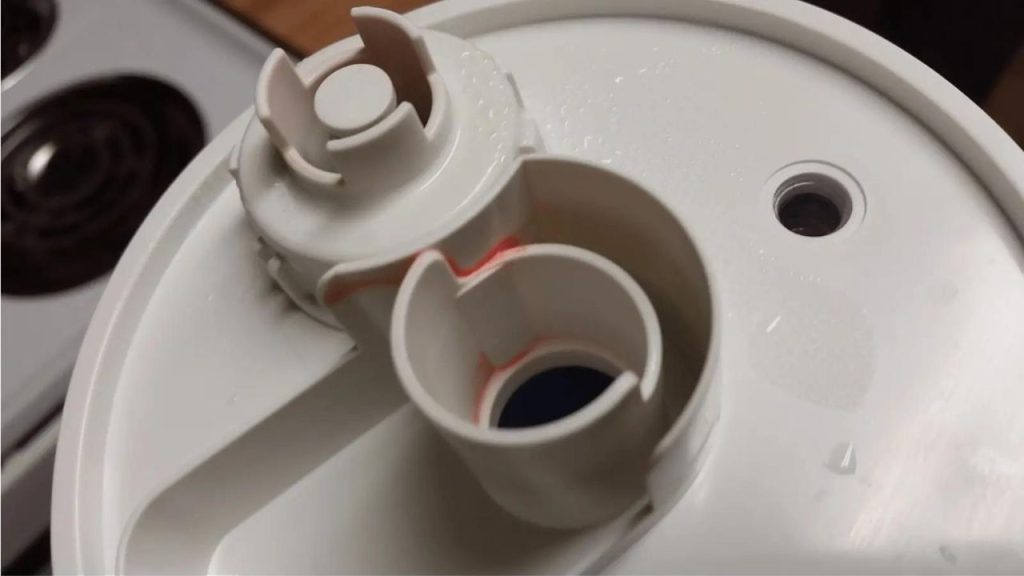
How Mold Grows in Humidifiers
Humidifiers are essential to maintain a comfortable humidity level in your home, especially during dry seasons.
However, if not properly maintained, they can also become a breeding ground for pink mold.
Pink mold thrives in moist and warm environments, and the water reservoir in your humidifier provides just that.
Maintaining regular cleaning routines is crucial to prevent pink mold from growing inside your humidifier.
Impact on Air Quality
The presence of pink mold in your humidifier can negatively impact the air quality in your home.
When the humidifier is running, it releases moisture into the air, and if pink mold is present, it could also release mold spores.
Breathing in mold spores can lead to various health issues, especially for those with allergies, asthma, or compromised immune systems.
To avoid releasing mold spores into the air and maintain a healthier environment, inspect your humidifier regularly.
READ MORE: Easy Ways to Make Your Home Less Dusty
3. Health Risks
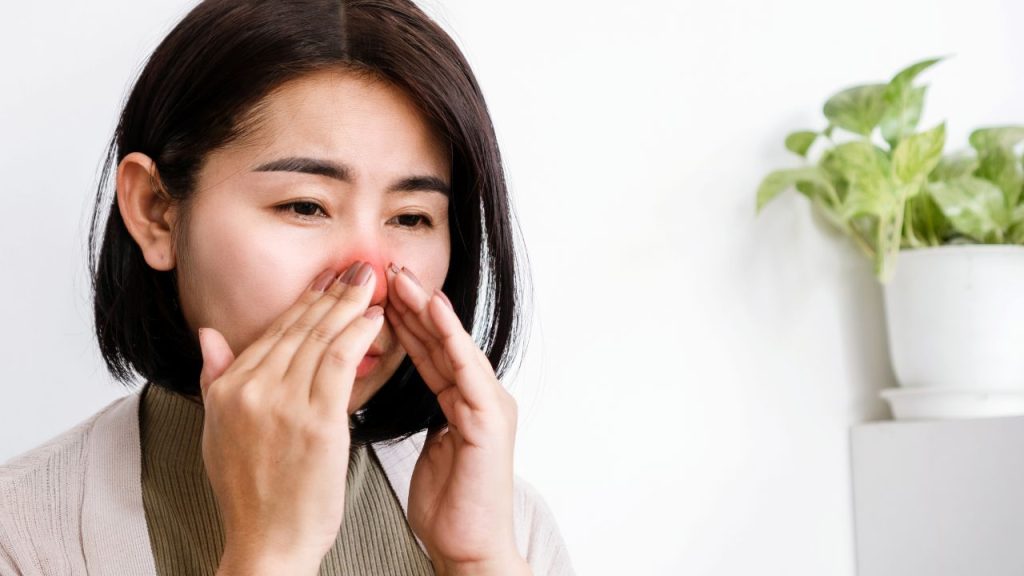
Respiratory Issues
Exposure to pink mold in your humidifier can lead to various respiratory issues, especially for those with pre-existing conditions.
Inhaling the bacteria can cause respiratory infections, worsen asthma, and even trigger hypersensitivity pneumonitis.
It’s crucial to address the pink mold problem for the well-being of everyone in your household, particularly for older people and children who may have weaker immune systems.
Allergies and Infections
Pink mold can also cause or exacerbate allergic reactions, contributing to skin irritations and infections.
Furthermore, it may aggravate existing allergies or create new sensitivities. Be mindful of any unexplained rashes or itchiness, as these could be signs of an allergy to pink mold.
In some cases, pink mold can lead to bladder infections if the infestation has spread to other parts of your home.
Gastrointestinal Problems
Though less common, pink mold exposure may contribute to gastrointestinal problems.
Contaminated air or surfaces can harbor bacteria resulting in flu-like symptoms or even urinary tract infections when ingested or in contact with open wounds.
Maintaining cleanliness in all damp areas, such as the bathroom and kitchen, is essential to prevent the harmful effects of pink mold on your health.
READ MORE: Best Desk Humidifiers: Top Picks for Comfort
4. Preventing Pink Mold in Humidifiers
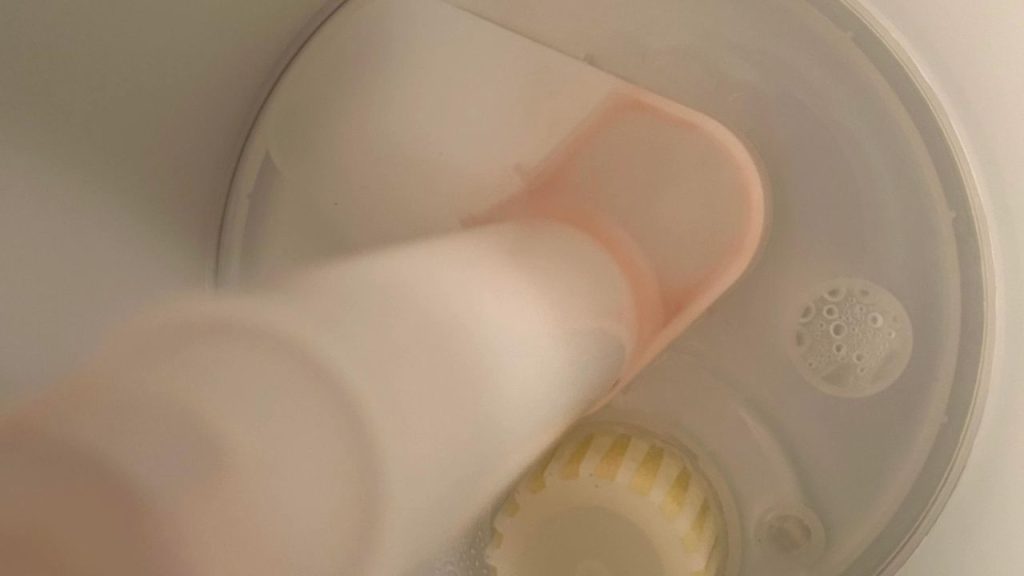
Proper Cleaning and Maintenance
To keep your humidifier free from pink mold, it’s essential to clean it regularly. Start by emptying and refilling the water tank with fresh water daily.
Use a solution of equal parts distilled white vinegar and water every week to clean your humidifier.
The vinegar will help effectively remove bacteria and mold, preventing its growth. Here are simple steps to follow:
- Disassemble: Turn off and unplug your humidifier. Remove the water tank and any removable parts, like the filter or mist nozzle.
- Clean: Fill the water tank with the vinegar solution, swish it around, and let it sit for 20-30 minutes. Gently scrub removable parts with a soft brush or cloth dipped in the vinegar mixture. Be sure to clean the base, as bacteria tend to accumulate there.
- Rinse: Rinse the water tank and parts thoroughly with warm water to remove the vinegar residue.
- Dry: Make sure all parts are completely dry before reassembling your humidifier.
To maintain cleanliness, consider using a disinfectant such as hydrogen peroxide or bleach.
It is important, however, to follow the manufacturer’s instructions on properly using bleach or other disinfectants, as using too much may damage the humidifier or cause respiratory issues.
Best Water Choices
The type of water you use in your humidifier can also affect mold growth.
Using distilled or filtered water can help prevent pink mold as they have fewer minerals for the mold to feed on than tap water.
By sticking to these water choices, you can reduce the chances of mold growth and keep your humidifier running efficiently.
Remember, regular care and attention to the water you use in your humidifier can prevent pink mold from developing.
By following these guidelines, you’ll be better equipped to maintain a clean and healthy environment for yourself and your loved ones.
READ MORE: Best Humidifiers for Hard Water
5. Cleaning a Contaminated Humidifier
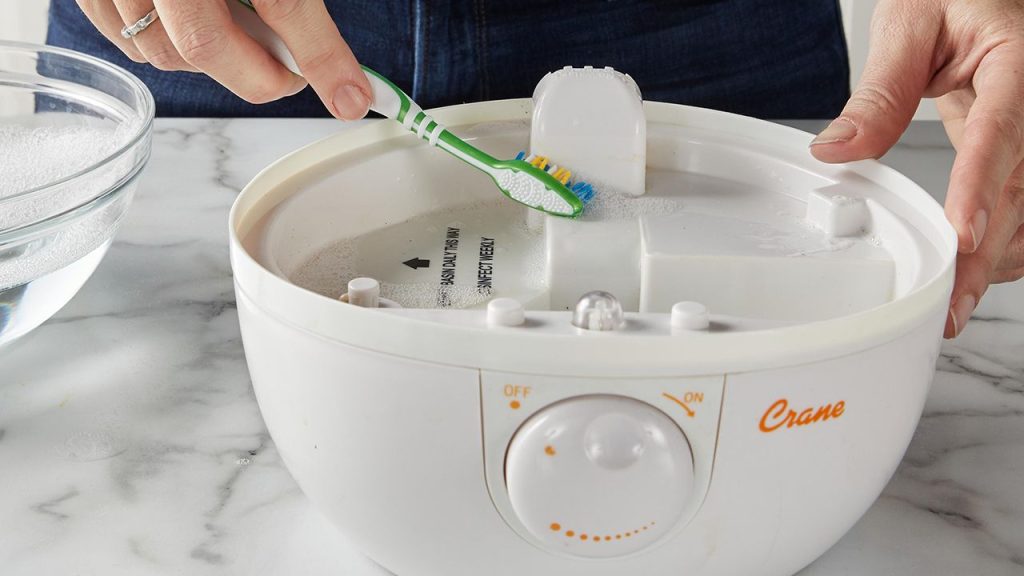
Using Vinegar and Bleach Solutions
You can use vinegar, hydrogen peroxide, or bleach solutions to clean a contaminated humidifier. First, unplug your humidifier and disassemble its parts.
Wear gloves and goggles to protect yourself from contact with the cleaning solutions.
Vinegar solution: Create a 1:1 mixture of white vinegar and warm water. Fill the humidifier tank with this solution and let it sit for 30 minutes. Meanwhile, use the same solution to clean other humidifier parts with a soft brush or cloth.
Bleach solution: If you prefer bleach, mix 1 tablespoon with a gallon of water. Fill the humidifier tank with this solution and let it sit for 30 minutes. Use the same solution to clean other parts of the humidifier as well.
After cleaning with either solution, thoroughly rinse the tank and other parts with clean water to remove any vinegar or bleach residue. Reassemble your humidifier, and it’s ready to use.
Regular Maintenance Tips
To prevent pink mold and other water-borne bacteria from growing in your humidifier, follow these regular maintenance tips:
- Rinse, towel dry, and refill your humidifier tank with fresh water daily.
- Perform a deep cleaning with vinegar or bleach solution once a week.
- Use distilled or demineralized water to reduce mineral buildup.
- Replace filters and wicks as recommended by the manufacturer.
By taking care of your humidifier with regular cleaning and maintenance, you’ll reduce the risk of pink mold and other contaminants affecting indoor air quality.
READ MORE: 10 Best Rated 30 Pint Dehumidifiers for Your Home
Frequently Asked Questions
How can I prevent mold in my humidifier?
To prevent mold growth in your humidifier, clean it regularly and discard any leftover water after each use. It’s also a good idea to use distilled water and to replace filters in a timely manner. Consider using intermittent usage and performing seasonal start-up and shut-down procedures to reduce mold growth chances further.
Is pink mold in a baby humidifier harmful?
Pink mold is a bacterial growth that can pose health risks, especially to young children and individuals with weakened immune systems. Removing pink mold from a baby humidifier as soon as you notice it is essential to minimize any potential harm.
How do I clean pink mold from my humidifier?
Begin by unplugging the humidifier, then disassemble and clean each component using water and white vinegar or a disinfecting cleaner. Be sure to scrub any surfaces where you see pink mold. Rinse the parts thoroughly and let them dry completely before reassembling the humidifier.
Are there any health risks with mold in humidifiers?
Mold in humidifiers can cause health issues, particularly respiratory problems and allergic reactions. Symptoms may include nasal congestion, coughing, wheezing, and eye irritation. Certain types of mold can be more harmful, so it’s important to address mold in your humidifier promptly to maintain good indoor air quality.
Do humidifier tablets help prevent mold?
Humidifier tablets infused with antimicrobial agents can help prevent mold growth by inhibiting the growth of bacteria and other microorganisms. However, using tablets alone is insufficient to prevent mold – proper cleaning, maintenance, and usage habits are still essential.
What is the cause of pink mold in a humidifier?
Pink mold forms when bacterial growth, commonly Aureobasidium and Fusarium, thrives in a humidifier’s warm, moist environment. Regular cleaning, proper maintenance, and distilled water will help limit the conditions that encourage pink mold growth.
